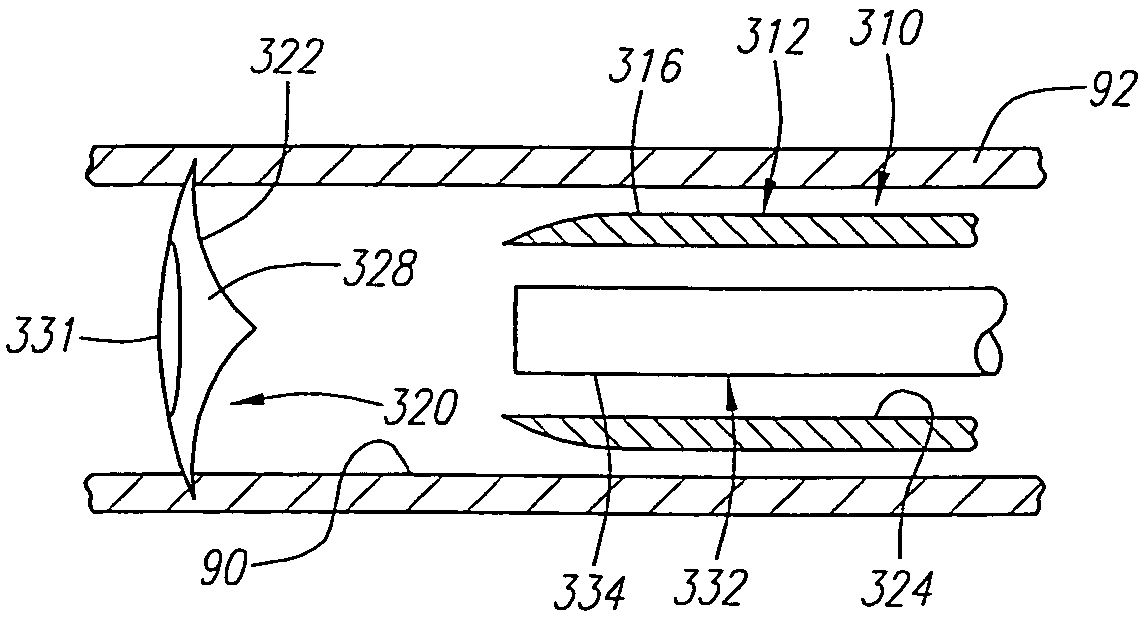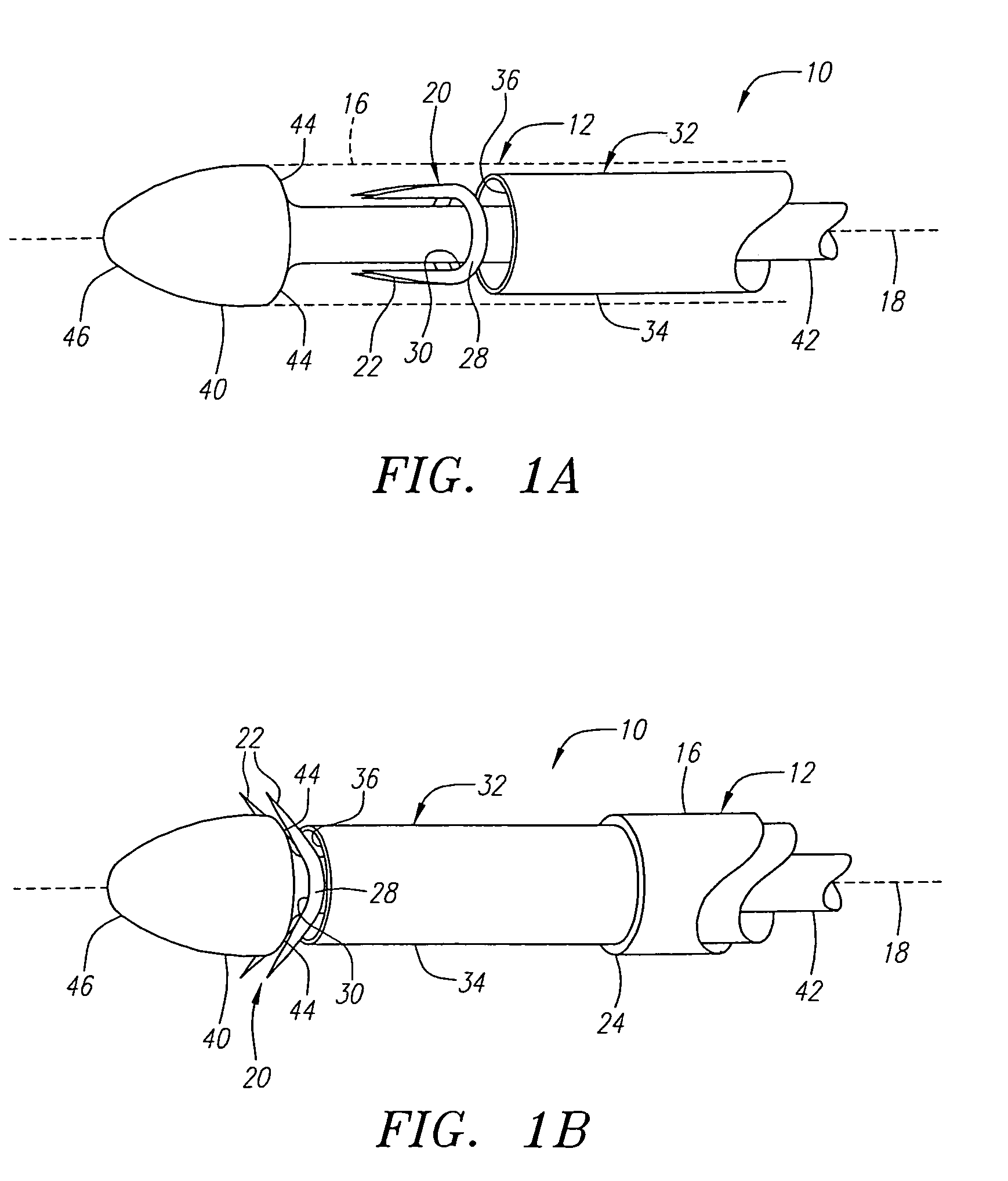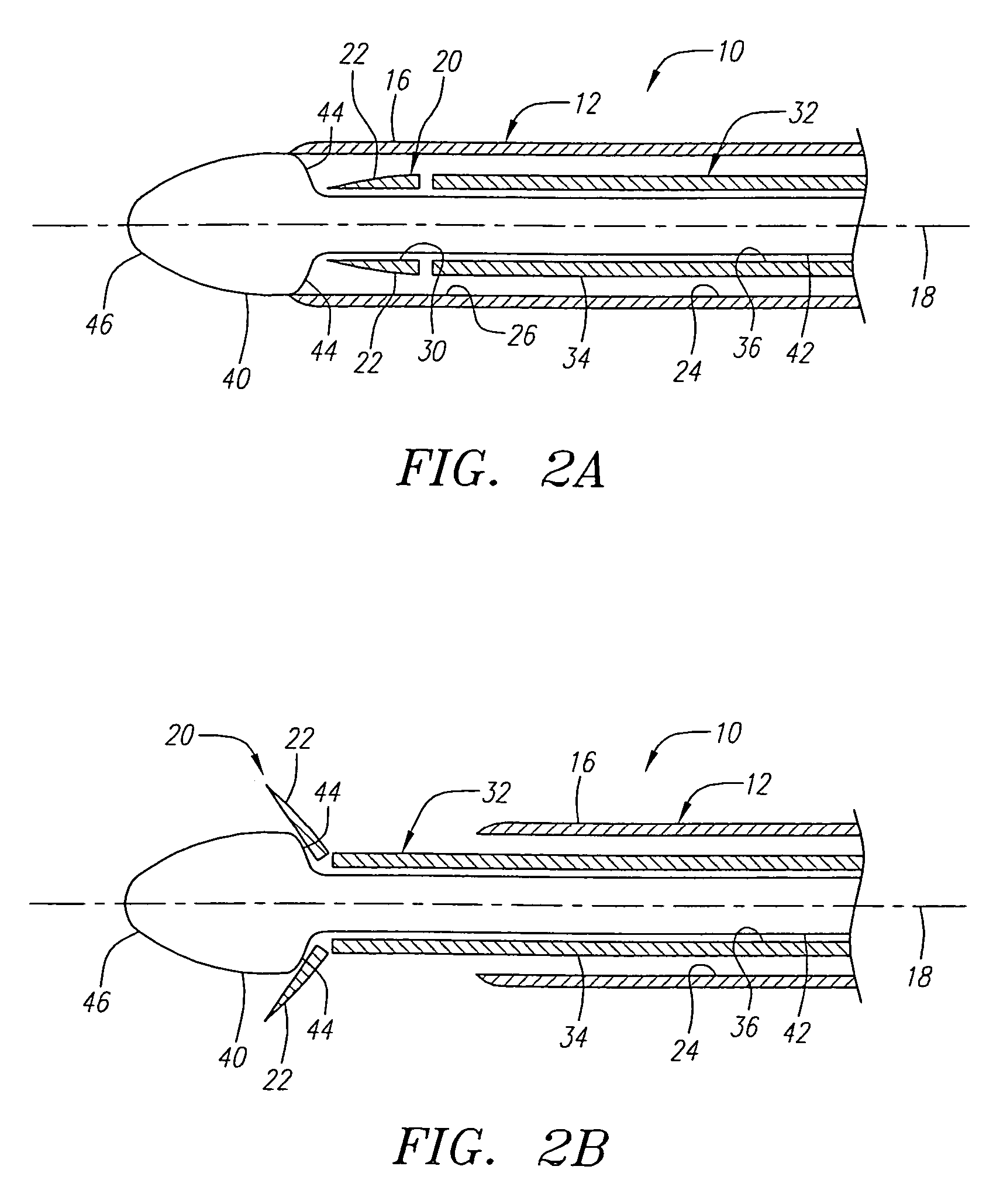Apparatus and methods for reducing lung volume
a technology of apparatus and lung, applied in the field of apparatus and methods for reducing the volume of the lung, can solve the problems of reducing the ability of the lung to effectively transfer oxygen, reducing the capacity and/or efficiency of the lung, and bronchitis or other chronic occlusive pulmonary disease (“copd”), so as to improve the engagement with surrounding tissue
- Summary
- Abstract
- Description
- Claims
- Application Information
AI Technical Summary
Benefits of technology
Problems solved by technology
Method used
Image
Examples
Embodiment Construction
[0032]Turning now to the drawings, FIGS. 1A–2B show a first preferred embodiment of an apparatus 10 for reducing volume of a lung, in accordance with the present invention. Generally, the apparatus 10 includes a sheath 12, a closure device or clip 20, a stop member 32, and a deflecting element 40.
[0033]The sheath 12 is an elongate tubular member including a proximal end (not shown), a distal end 16 having a size for insertion into a bronchial passage or other body lumen (not shown), and a longitudinal axis 18 extending between the proximal end and the distal end 16. The sheath 12 includes a lumen 24 extending between the proximal end and the distal end 16, and optionally may include one or more additional lumens (not shown), as described further below. The sheath 12 may be formed from a variety of known biocompatible materials, and may have a diameter between about two and twenty millimeters (2–20 mm), and a length between about twenty and two hundred centimeters (20–200 cm).
[0034]I...
PUM
 Login to View More
Login to View More Abstract
Description
Claims
Application Information
 Login to View More
Login to View More - R&D
- Intellectual Property
- Life Sciences
- Materials
- Tech Scout
- Unparalleled Data Quality
- Higher Quality Content
- 60% Fewer Hallucinations
Browse by: Latest US Patents, China's latest patents, Technical Efficacy Thesaurus, Application Domain, Technology Topic, Popular Technical Reports.
© 2025 PatSnap. All rights reserved.Legal|Privacy policy|Modern Slavery Act Transparency Statement|Sitemap|About US| Contact US: help@patsnap.com



